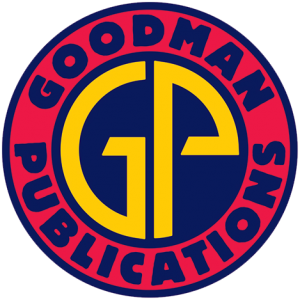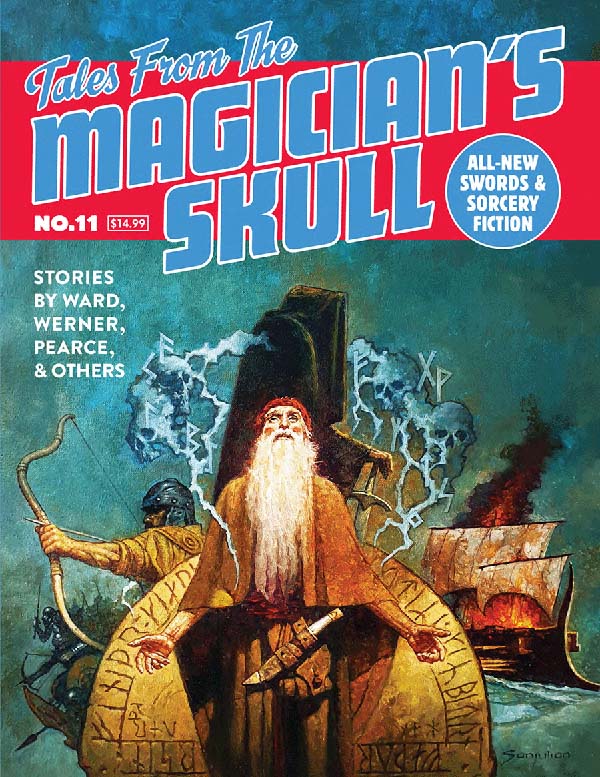Unearthing David Drake’s “The Barrow Troll”
by Brian Murphy
Twelve years ago I wrote a piece on David Drake’s The Barrow Troll for the late, lamented The Cimmerian website. My own interest re-piqued in this tale after mentioning it among ten recommended sword-and-sorcery tales for the haunting season, I have taken the opportunity to unearth that piece, and update and revise with the latest news on it and its author.
“You Northerners believe in trolls, so my brother tells me,” said the priest.
“Aye, long before the gold I’d heard of the Parma troll,” the berserker agreed. “Ox broad and stronger than ten men, shaggy as a denned bear.”
–David Drake, “The Barrow Troll”
David Drake’s “The Barrow Troll” was originally published in December 1975 in Whispers magazine, a former periodical specializing in dark fantasy and horror. Beginning in 1977 editor Stuart David Schiff released the first of six best-of anthologies in a series also entitled Whispers. “The Barrow Troll” appeared in the first of these, which is where I first discovered this wonderful fusion of horror and sword-and-sorcery.
In his introduction to the story, Schiff describes “The Barrow Troll” as “a brutal and shocking piece.” That about sums it up. It’s probably my favorite entry in what is an almost-uniformly excellent collection (though Karl Edward Wagner’s “Sticks” is an absolute gem), and was one of only four short stories to be nominated for a World Fantasy Award in 1976.
The basic details of the story are as follows: Barbarian warrior Ulf Womanslayer seeks out a rumored great treasure housed within a barrow, guarded by the notorious Parma Troll. Ulf received his evocative surname after cutting a woman named Thora to pieces with a four-foot axe during a hall burning. He’s a berserker, the kind so feared by the English whose coasts they raided as it was rumored they were invulnerable to the bite of weapons while in their frenzied state.
In order to kill the troll, Ulf requires the services of a priest, according to Thora’s final words: “And she told me of the Parma lord and the treasure he brought back from Ireland, gold and gems,” Ulf says. “And she said it was cursed that a troll should guard it, and that I must have a mass priest, for the troll could not cross a Christian’s fire and I should slay him then.” And so as the story opens Ulf drags behind him at the end of a rope the hapless priest Johann, off to the barrow to slay its guardian and loot the rumored riches therein.
Ulf’s confrontation with the troll stays with you, rendered so skillfully by Drake:
Ulf’s eyes began to glaze. He slashed his axe twice across the empty air and shouted again, “Troll! I’ll spit on your corpse, I’ll lay with your dog mother. Come and fight me, troll, or I’ll wall you up like a rat with your filth!”
Johann stood frozen, oblivious even to the drop of pitch that sizzled on the web of his hand. The berserker bellowed again, wordlessly, gnashing at the rim of his shield so that the sound bubbled and boomed into the night.
And the tomb roared back to the challenge, a thunderous BAR BAR BAR even deeper than Ulf’s.
The battle is outstanding and contains an unexpected twist that I won’t spoil here. I’ll just add that if you like the Northern Thing/Beowulf-flavored fantasy (who doesn’t?), “The Barrow Troll” is worth tracking down.
Fortunately, finding it should be an easy task. According to the ISFDB “The Barrow Troll” has appeared in at least 13 publications spanning more than 40 years, not including reprints or international versions, the latest in 2012 (From the Heart of Darkness by Tor). Here is its publication history:
- Whispers #8, December 1975.
- Savage Heroes: Tales of Sorcery and Black Magic, 1977.
- Whispers, 1977.
- The World Fantasy Awards, Volume Two, 1980.
- From the Heart of Darkness. 1983, Tor.
- Vettius and His Friends. 1989, Baen.
- Heads to the Storm, 1989, Baen.
- The Best of Whispers, 1994, Borderlands Press.
- Balefires, 2007, San Francisco: Night Shade Books.
- Writers for Relief Volume Two, 2008, Dragon Moon Press.
- The Century’s Best Horror Fiction 1951-2000, Cemetery Dance Publications, 2012.
- The Sword and Sorcery Anthology, D. Hartwell and J. Weisman eds. 2012, San Francisco, CA: Tachyon Publications.
- Night & Demons, 2012.
Drake should be a better-known figure in sword-and-sorcery circles. Influenced by the likes of Robert E. Howard, Clark Ashton Smith, and J.R.R. Tolkien, he sold his first short story to August Derleth of Arkham House. Drake collaborated with the great Karl Edward Wagner both professionally and creatively, including co-founding the specialty publishing house Carcosa, and co-writing with Wagner the short story killer, recently given second life by DMR Books in Renegade Swords II. He served as an assistant editor for Whispers where he helped promulgate S&S and horror. More recently Drake wrote guided Ramble into Sword and Sorcery Fiction・ for the introduction to The Sword & Sorcery Anthology. I found it to be useful if breezy and high-level take on the subgenre’s origins and subsequent development.
Drake is also a Vietnam veteran and claims that the war was the greatest single influence on his life. The shocking eruptions of violence and brutality of his stories probably owe much to his experiences in that conflict.
Drake’s first novel, The Dragon Lord (1978), is a grim and gritty, historically grounded take on Arthurian mythology. Imagine Arthur as a power-hungry, petulant warlord with a clubbed foot; Launcelot as a hulking Roman Gaul, arrogant and bullying; and Merlin a half-crazed sorcerer barely in control of his own overestimated powers of magic, and you have the basic flavor of Drake’s debut novel.
Drake’s tales of the Roman legionnaire Vettius, including the likes of “Dragon’s Teeth” (Midnight Sun, Swords Against Darkness) are, like The Dragon Lord, rich with historical detail, but layer on monsters and sorcery in just the right balance that makes for fine sword-and-sorcery. You can find these collected in Vettius and his Friends (1989).
Drake is perhaps best known as the author of the Hammer’s Slammers military science fiction series, though he’s written much more besides. To learn more about his considerable body of work take a spin through his personal website, www.david-drake.com. He’s been dealing with some recent health issues, and I wish him the best, and thank him for “The Barrow Troll” and his many other fine entries in the sacred subgenre.
Brian Murphy is the author of Flame and Crimson: A History of Sword-and-Sorcery (Pulp Hero Press, 2020). Learn more about his life and work on his website, The Silver Key.
The header art is by Jean-Sebastien Rossbach, used for the cover of Hartwell and Weisman’s 2012 The Sword & Sorcery Anthology.








